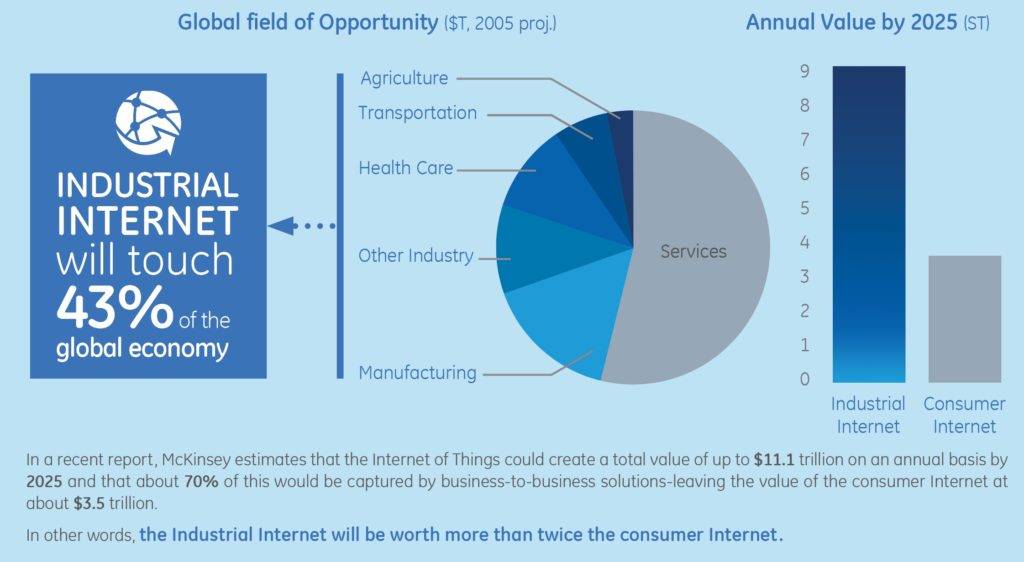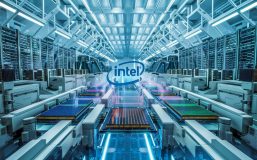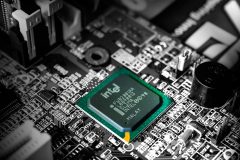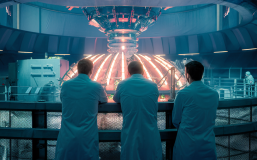Industrial operators already have mountains of data and its only getter bigger. A recent report by GE and Accenture found that for 80 to 90 percent of companies, Big Data analytics is among the top three priorities, and 76 percent expect their investment to increase over the next year. Data holds powerful answers for industries across the spectrum — from energy to health care to transportation and beyond — to increase productivity, improve the customer experience and open doors to new technologies and revenue streams.
To get there, we need more than just data collection. Industry needs to be able to use data better and faster for smarter operating decisions, which is the promise of the Industrial Internet of Things. The pathway to this next stage of industrial productivity is through the individual machines from wind turbines to MRI machines to turbines, and more specifically through their control devices.
The industrial internet is like a human body
A functioning and connected nervous system play the key role in allowing us to operate efficiently by responding to our environment extremely fast, even unthinkingly. In this analogy, machine controls are the nervous system of the Industrial Internet.
Traditional control systems, however, are woefully inadequate for realizing the full potential of the Industrial Internet. Traditional controls operate on a simple closed loop, act on a fixed schedule or respond to a very limited set of environmental data. They are self-contained, with limited or no interaction with other industrial systems. Currently, companies with traditional control systems can only utilize about three percent of data from industrial assets. Think about that: Just three percent.
The next wave of industrial productivity growth will come from turning that data into automated operational decisions driven by machine analytics. We need controls at the machine level to be not just smart, as in collecting and processing data locally, but to be connected. Connected controls can utilize the reams of local data by funneling it through the analytical and computing power of the cloud and back down with specific decisions, in real time. They need to do this in addition to performing the same reliable, deterministic control that we all rely upon.
It’s not about more data, but more effective use of data
Our approach at GE has been to create an Industrial Internet Controls System (IICS) that reliably, safely and securely connects thousands of machines at scale to the power of the cloud and brings computing to the edge in the plant and at the machine. IICS is designed as an out-of-the-box bridge for industrial assets to the full computing power of GE’s Predix platform, which we built as an operating system specifically for industry.
The system consists of a flexible combination of intelligent controllers, I/O modules, secure cloud connectivity, advanced analytics software, and apps. For example, connected controls could enable an app running a turbine to check the price of electricity and adjust speed when the price was at an optimal level. A traditional control would have run the machine at a predetermined speed with no knowledge of outside factors that drive profitability, but the new paradigm creates greater efficiency by optimizing operations based on analysis of dynamic external factors.
Another example would be a gas-fired power plant. Industrial Internet automated controls can canvass the information on the performance and operating conditions of every single machine in the plant, as well as market conditions such as costs, pricing, supply from other electricity sources and demand response. They know if the power supply from wind farms and solar photovoltaic sources is surging or ebbing and whether demand is high or low. They can forecast pricing and the additional revenue that would accrue from stepping up production and set it against the cost regarding wear and tear of parts and future maintenance expense. They can do this with the utmost precision because digital twin models provide precise information on the health and performance of every asset in the plant.
This new-generation nervous system for industry goes beyond Big Data by allowing the best allocation of data processing between the cloud and the edge based on the speed of response and precision of insights. It also enables different industrial assets to talk together and design optimal coordinated responses, and it combines data and forecasts about machines, the physical environment, and the economic environment.
The benefits to industrial companies and their customers are substantial: a shift to predictive maintenance, sharp reductions in malfunctions and unplanned downtime, greater efficiency, productivity, and reliability, lower costs and higher revenues. The extent of these benefits, and the speed at which they can accrue depends crucially on the efficiency of the Industrial Internet controls system.
The author is president and CEO of GE Automation & Controls










